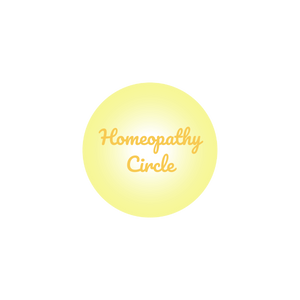What is Homeopathy?

Homeopathy is energy medicine derived from a potentized substance that has the power to heal an individual who has a similar resonance to the very same substance. In other words, when a person’s energy is matched with a similar energy from a potentized homeopathic substance, it stimulates the individual’s unique and inherent healing response.
In the late 18th century, Samuel Hahnemann, a German physician, discovered and developed homeopathy to treat his ailing patients. He established the main principle behind homeopathy’s healing response, “like cures like” also known as “law of similars”. Approximately 600 substances were proven and used as homeopathic remedies by the end of the 19th century 1. Since then, homeopathy has evolved to offer more than 6,500 remedies for therapeutic use.
Potentized medicines are prepared by liberating the dynamic energy within a substance. Potentization is a technique of stepwise, dilution and succussion of the original substance. Each serial dilution is followed by succussion, which involves vigorous shaking. What happens in many dilutions and succussions is a liberation of the finer symptoms of the substance 5. It is these finer symptoms that are matched to the individual’s symptoms and theme. Serial dilution methods involve either 1:10 ratio denoted by X/D (decimal), or 1:100 ratio denoted by C (centesimal).
Homeopathic remedies are mainly derived from substances belonging to the mineral, plant and animal kingdoms. New substances are proven (tested) in healthy individuals to determine their unique characteristics before being considered as possible remedies. Proving (testing) is conducted by administering a potentized substance to a set number of healthy people for a specified length of time. During a proving, each individual’s physical, mental, and emotional symptoms are recorded, including their short-lived artificial (foreign) disease 3. Hahnemann had found that each substance carried an innate artificial disease, and when this is matched to the energy of a person’s disease, it rebalances their mistuned life force energy, and extinguishes their disease 2,3.
The principle of “like cures like” makes more sense, when one considers how a C note played on a piano, makes a nearby string instrument’s C note to sound automatically. This has to do with the resonance of the string instrument’s C note to the piano’s C note. When the substance (remedy) matches the resonance of a person’s state, the principle of “like cures like” gets engaged. This causes the mistuned energy to replay and re-balance, thereby removing the dis-ease.
There is a false notion that repeated dilution of a crude substance removes the therapeutic benefit by loss of the original molecules. Dilution of a substance beyond 12 C potency reaches a state, in which there are no longer any molecules of the starting substance. Yet its potency or power shifts to a higher dimension with each dilution and succussion. This may be explained by its transformation to smaller nanoparticles not detected by the older scientific instruments. Nanoparticles are known to exhibit different properties (behaviour)6 from the original substance, such as increased surface area, reduced mass, super para-magnetism. These new found properties have been applied in nanotechnology, such as in smaller and lighter memory chips. Perhaps, homeopathy derives from the new-found properties that match the unique proving symptoms.
It may be helpful to consider that every material substance in the cosmos has their own electromagnetic field 5. When a substance is administered to an organism, it influences the recipient in two ways. The first and most well-known influence is the chemical response, such as from the effects of bath-salts, herbs, or drugs. Here, the substance’s medicinal or chemical effect can relieve symptoms significantly, especially if the individual has a resonance to it. However, it has been shown that in the long run, the relief does not last with subsequent doses. The second way a substance can act is through potentization, which promotes intensification of its electromagnetic field, or energy footprint. This enrichment of the energy footprint in homeopathic remedies of 12C and above may explain the lasting healing effect.
The hypotheses above indirectly sheds light on how homeopathy can heal deeply. Still, the inner workings of homeopathy remain a mystery because the finer energy dynamics are not directly perceivable to human eyes. What is intriguing are the numerous scientific, and case studies that continue to show the efficacy of homeopathy.
Fun fact: Early in the 20th century, there were 22 medical homeopathic schools, about 100 homeopathic hospitals, and around 1,000 homeopathic pharmacies in the United States 4.
References:
- Coulter L. H. (1981). Homeopathic Science and Modern Medicine. North Atlantic
- Hahnemann, S., & O’Reilly, W. B. (1996). Organon of the medical art. Birdcage Books.
- Hahnemann, S. et al. (1982). Organon of Medicine. Cooper Publishing.
- Ullman, D. (2007). The homeopathic revolution: Why famous people and cultural heroes choose homeopathy. North Atlantic.
- Ullman, D. Exploring Possible Mechanisms of Hormesis and Homeopathy in the Light of Nanopharmacology and Ultra-High Dilutions. Sage journals, 2021. Accessed February 22, 2023. https://journals.sagepub.com/doi/full/10.1177/15593258211022983
- Vithoulkas, G., & Tiller, W. A. (2009). The Science of Homeopathy. International Academy of Classical Homeopathy.
